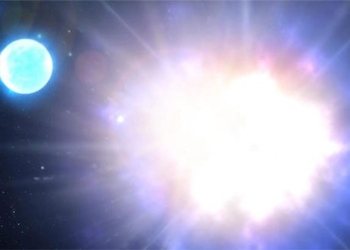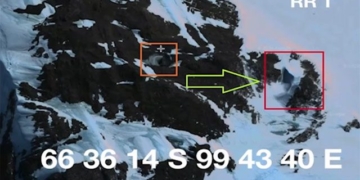After many days of silence, ISRO has made significant revelations about the Chandrayaan-3 Moon mission.
While the pair of craft from Chandrayaan-3 remain in permanent sleep mode on the Moon’s surface, the mission’s modules (currently orbiting the Moon) have been surprising many with new scientific information being transmitted daily.
Recently, the Indian Space Research Organisation (ISRO) unveiled incredible details surrounding the Chandrayaan-3 mission, which India successfully executed in August 2023.
Revelation One: India Deploys Nuclear Technology for Chandrayaan-3
According to a report in the Times of India, the propulsion module of Chandrayaan-3, which carried the Vikram lander and Pragyan rover to the Moon, is powered by nuclear technology.
Two Radioisotope Heating Units (RHU), generating 2 watts of power, are installed on the propulsion module that is currently orbiting the Moon.
The operation of this heating unit paves the way for future nuclear-based missions to survive longer on the Moon.

Image of Vikram lander (left) and Pragyan rover on the Moon. (Source: ISRO).
The Radioisotope Heating Unit (RHU) is a device that generates heat by harnessing energy from the radioactive decay of a specific isotope.
The primary function of the RHU, when installed on a spacecraft, is to provide a long-lasting and reliable heat source for various components and instruments on the spacecraft to keep them warm in the cold of space.
This is particularly crucial for missions operating in extremely cold environments, such as outer space or other celestial bodies, where traditional heating methods like electric heaters may not be viable.
Previously, many questioned why the Indian Space Research Organisation (ISRO) did not integrate RHUs for the pair of Vikram and Pragyan to ensure both could “survive” the cold Moon night, which can drop to -200 degrees Celsius (polar nights can reach -250 degrees Celsius) – similar to what China did with its Chang’e-4 Moon mission in 2019.
ISRO remained silent on this question.
The revelation that ISRO integrated nuclear heating technology into the propulsion module of Chandrayaan-3 (and not for Vikram and Pragyan) might be a strategic move by the country.
According to India Today, ISRO installed the RHU for the propulsion module orbiting the Moon for testing and technology demonstration purposes in lunar orbit. It is possible that ISRO will integrate RHUs into more ambitious future missions.
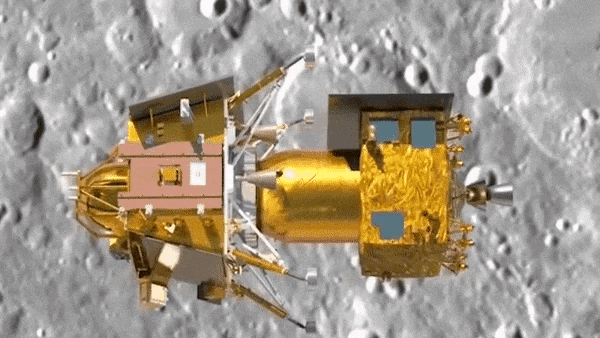
Graphic showing the nuclear technology propulsion module separating from the Vikram lander above the Moon. (Image: ISRO).
The RHU contains a radioactive isotope, typically plutonium-238 (Pu-238) in the form of plutonium dioxide (PuO2). This isotope decays over time, releasing heat energy during its decay, which is predictable.
This heat is harvested and used to maintain the temperature inside the spacecraft or specific components, such as scientific instruments, fuel tanks, or critical electronics.
A significant advantage of using Radioisotope Heating Units is that they provide longer operational lifespans for space missions. For instance, Plutonium-238 has a half-life of about 87.7 years, meaning it can provide a stable heat source for decades.
Thus, when sending a mission that could last for decades, a Radioisotope Heating Unit is a good choice.
Another advantage is that RHUs have high reliability since they do not depend on moving parts or external power sources. This makes them ideal for unmanned missions that must endure harsh conditions for extended periods.
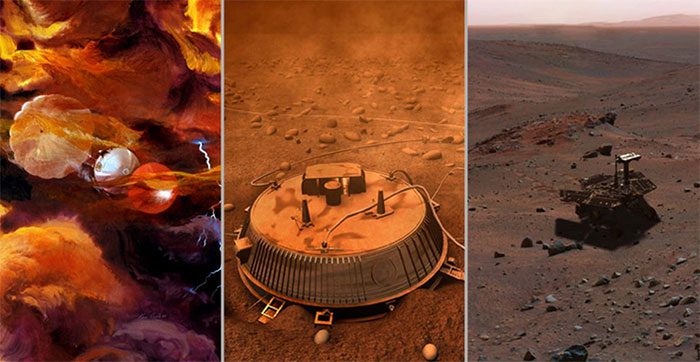
Radioisotope Heating Units are crucial for providing heat to keep some spacecraft warm enough to complete their missions. (Image: NASA).
ISRO is not the first space agency to utilize this nuclear-based technology. Mars rovers, such as NASA’s Curiosity and Perseverance, have used RHUs to keep their critical components warm in the frigid Martian environment.
According to NASA, Radioisotope Heating Units (RHUs) are referred to as “silent heroes” of radioisotope power technology.
The heat generated by these components not only ensures the normal operation of the spacecraft’s instruments and systems but also extends the spacecraft’s operational time, allowing them to conduct valuable scientific research over many years.
Meanwhile, these devices have also been used in continuously moving spacecraft in space, such as NASA’s Voyager-1 and Voyager-2, which have been operational for the past five decades and are currently traveling through interstellar space, beyond the Solar System.
Revelation Two: Chandrayaan-3 Displaced 2.06 Tons of Lunar Soil During Landing
Chandrayaan-3 achieved its historic lunar landing on August 23, 2023. The lander, named Vikram, and the rover, Pragyan, touched down at Shiva Shakti Point, near the Moon’s South Pole.
ISRO recently revealed that as Vikram approached the lunar surface, it created a “spectacular ejecta plume” and displaced tons of lunar regolith during its landing on the natural satellite of Earth.
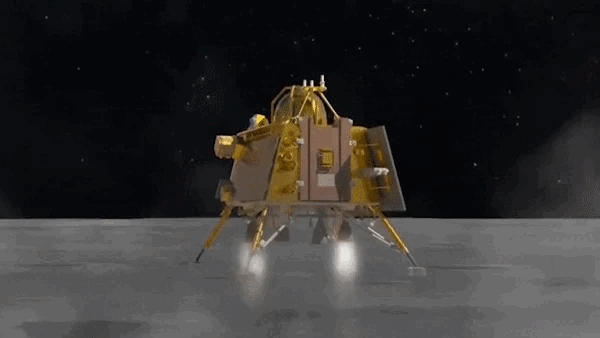
The Vikram lander created a “spectacular ejecta plume” and displaced tons of lunar regolith. (Image: ISRO).
This phenomenon was recorded and analyzed by scientists from the National Remote Sensing Centre (NRSC), a division of ISRO. According to NRSC’s findings, approximately 2.06 tons of regolith were ejected and displaced over an area of 108.4 square meters around the landing site.
This result is based on a series of high-resolution images taken before and after Vikram’s landing by the High Resolution Camera (OHRC) of the Chandrayaan-2 mission, which India launched in 2019.
According to Indian scientists, the “ejecta plume” is the result of the lander’s interaction with the Moon’s surface, and they refer to it as the “dance of technology and lunar geology.”
This plume holds significant scientific value. It provides valuable insights into the dynamics of impacts on the Moon and the geological history of the natural satellite.
The study of the “ejecta plume” may help scientists better understand the Moon’s past and its interactions with celestial bodies. Therefore, the plume created by Chandrayaan-3 during its lunar landing is not only a testament to India’s technological prowess but also a gateway to uncovering the mysteries of the Moon.
The Chandrayaan-3 mission is a continuation of the Chandrayaan-2 mission, aimed at demonstrating comprehensive capabilities in safe landing and mobility on the lunar surface.








































